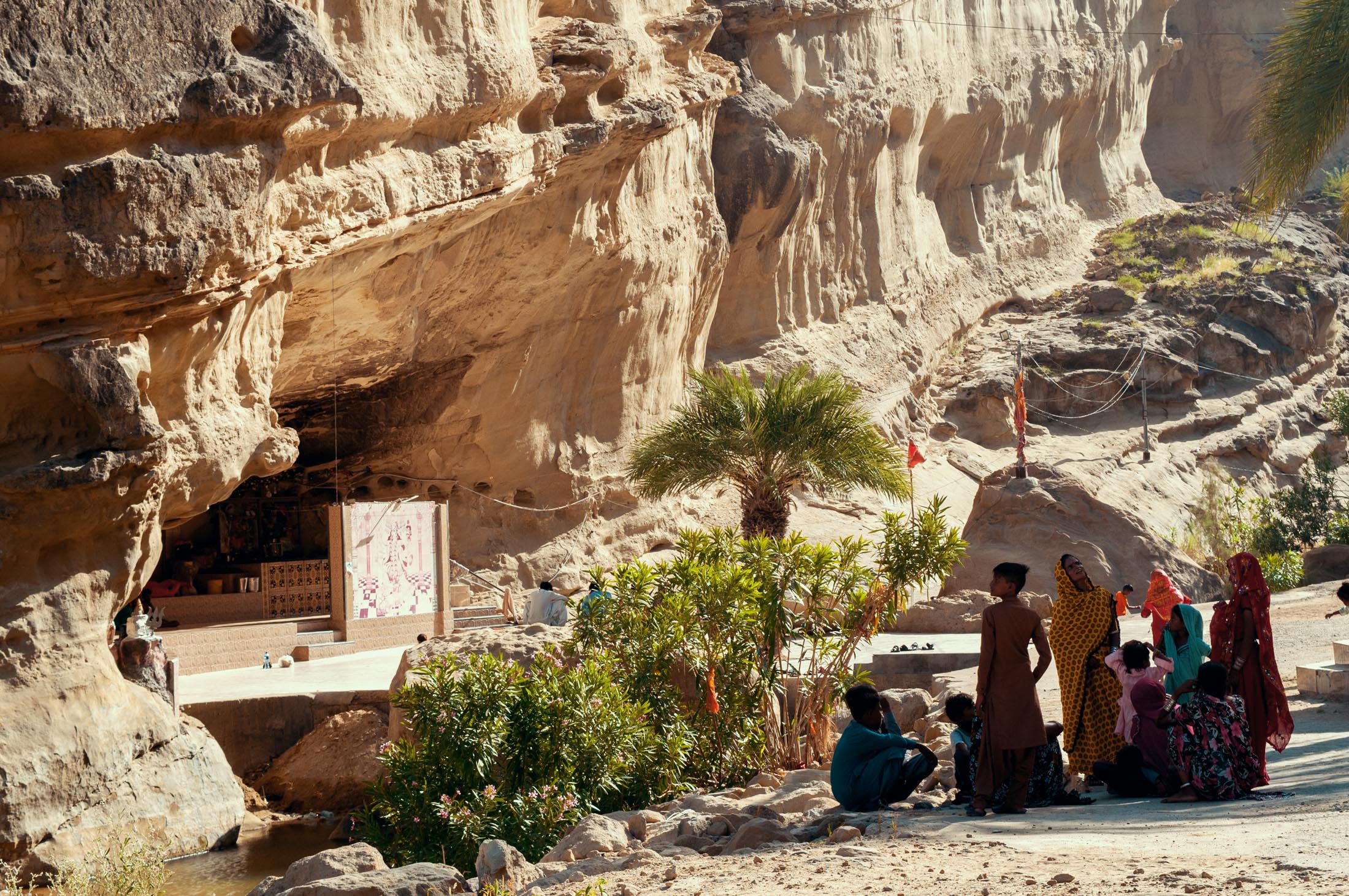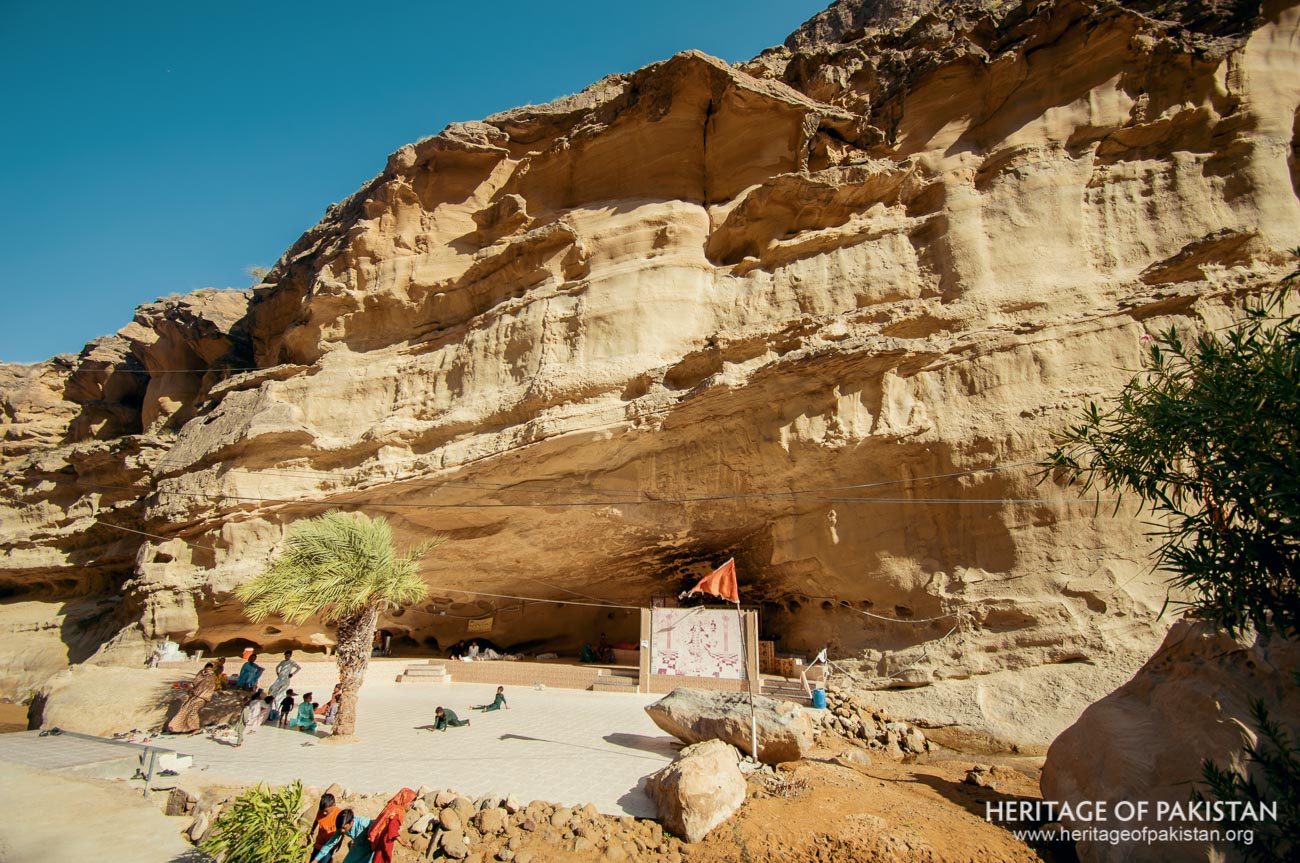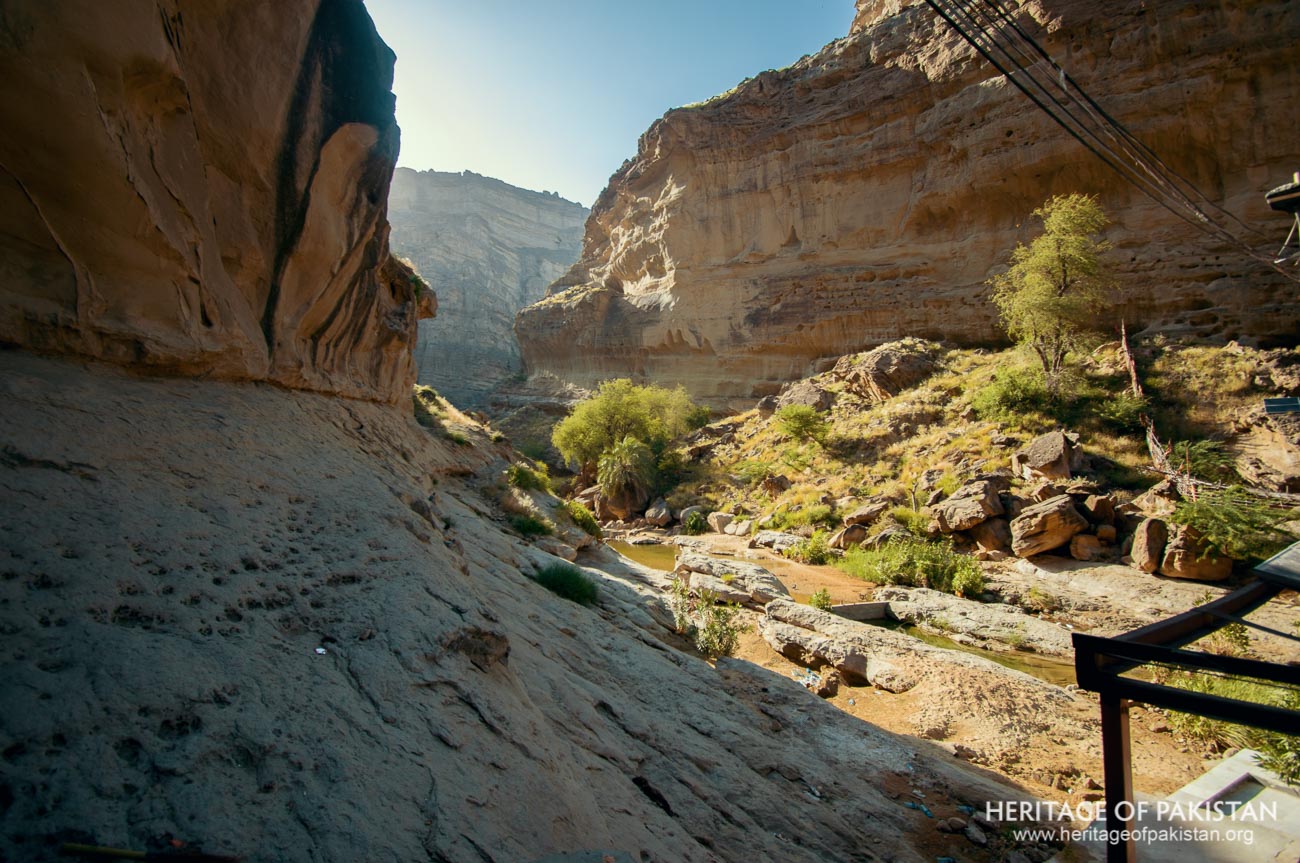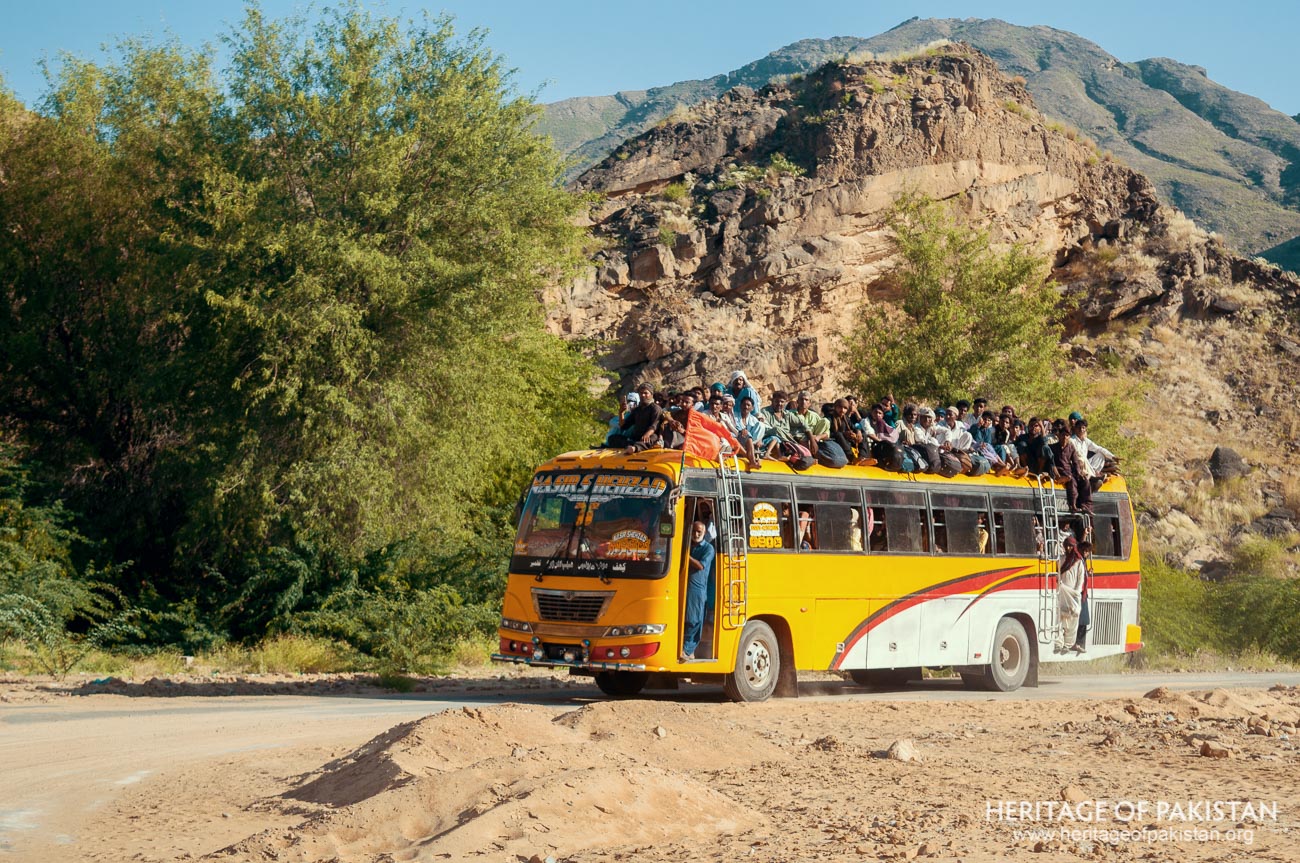Did You Know?
Hinglaj Mata Mandir is believed to mark the sacred spot where the head of the goddess Sati fell, making it one of the most important Shakti Peethas in Hinduism.
25°30'52.3"N 65°31'05.0"E
Hinglaj Mata Mandir is believed to mark the sacred spot where the head of the goddess Sati fell, making it one of the most important Shakti Peethas in Hinduism.
The Best Time to Visit Balochistan Province is Year long as it has bearable Cold winters and Hot Summers. However, Summers can get really Hot and precautions are recommended during Daytime visits.


Hinglaj Mata Mandir, also known as Nani Mandir, is an ancient Hindu temple situated within Hingol National Park, Balochistan. Spanning an area of 6,190 km², Hingol National Park is Pakistan’s second-largest national park and lies along the Makran Coastal Highway, connecting Karachi to Gwadar.
Also referred to as "Bibi Nani Mandir," meaning "Honorable Maternal Grandmother Temple," the shrine holds immense religious and cultural significance. Associated with the Charani tradition of Hinduism, it is believed to be thousands of years old.
According to Hindu mythology, the site is sacred as it marks the spot where the head of the goddess Sati fell when her body was dismembered by Vishnu, making it one of the sacred Shakti Peeths. located near the Hingol River, the temple is located within a natural cavern through which a stream flows into the river. The main shrine itself is housed inside a mountain cave. The temple is currently managed by the Shri Hinglaj Mata Welfare & Development Society.


The Hinglaj Mata Mandir is one of the two Shakti Peethas in Pakistan, alongside Sharada Peeth in Azad Kashmir. These sacred sites, central to the ancient tradition of Shaktism, hold profound spiritual significance as places where the consecrated ashes of the goddess Shakti, also known as Sati, are venerated. Each year, thousands of pilgrims visit Hinglaj Mata Mandir to pay homage and perform their pilgrimage.
According to Hindu tradition, Sati, the daughter of Daksha Prajapati, married Lord Shiva against her father's wishes. Daksha, displeased with their union, organized a grand yajna but intentionally excluded Sati and Shiva. When Sati arrived uninvited, Daksha insulted her and Shiva, driving her to commit suicide by leaping into the sacrificial fire. Although Sati perished, her body remained unburned. Overwhelmed by grief, Lord Shiva wandered the universe with her corpse.
To end Shiva’s sorrow, Lord Vishnu used his Sudarshan Disc to dismember Sati's body into 108 parts. Of these, 52 fell to Earth, each site becoming a Shakti Peetha, while the rest fell on other planets. Hinglaj Mata Mandir is believed to mark the spot where Sati's head fell, granting it unique reverence and cementing its importance in the Shaktism tradition.
Another legend associated with the origin of Hinglaj Mata Mandir dates back to the Tetra Yuga, approximately three million years ago, when the region was inhabited by the Hingoli people. The Hingoli were ruled by a tyrant king named Vichitra Hingol, who was infamous for tormenting his subjects and abducting their women.
According to the legend, the cries of the oppressed Hingoli people reached Hinglaj Mata, who intervened to put an end to their suffering. The goddess took King Hingol to a cave, where she executed him as retribution for his cruelty. Before his execution, the king repented and begged for forgiveness. As a final request, he asked Hinglaj Mata to name the place after him, a wish that the goddess graciously granted.


The Hinglaj Yatra is one of the most significant Hindu pilgrimages in Pakistan, drawing over 250,000 participants during the spring season. This four-day religious event, known as the Hinglaj Mata Teerath Yatra and Shri Hinglaj Seva Mandli, takes place annually in April at Hingol. Despite the lack of precise documentation regarding the total number of visitors to the temple, the pilgrimage remains a cornerstone of spiritual practice for Hindus in the region.
Pilgrims traditionally begin their journey at the Nanad Panthi Akhada in Karachi, trekking 250 kilometers through the desert to reach the temple. Along the way, they traverse Hingol National Park, stopping at designated locations for religious observances and rituals. These rituals are deeply connected to the natural environment, including ritual bathing in the Hingol River. One of the most significant rites involves a visit to the nearby mud volcanoes, particularly Chandragup, which is considered a manifestation of Lord Shiva and is affectionately called Baba Chandragup by devotees.
At Chandragup, pilgrims engage in a unique ritual. Before meditating around the volcano's mouth, they must announce their names, origins, and sins aloud. They then spend the night in meditation, surrendering to the divine power of Lord Bholenath. It is believed that this act of devotion absolves them of their sins. The following day, pilgrims offer a coconut to the volcano as part of their ritual.
The Hinglaj Yatra attracts not only Hindus but also tribal communities and the local Muslim population, who revere the goddess under the name Bibi Nani. The pilgrimage is known locally in the Balochi language as Nani-e-Ziarat, and the local Sufi and Zikri Muslims participate with great devotion. They follow ancient practices, undertaking a pilgrimage called Bibi Nani Peer-e-Ziarat, reflecting a shared spiritual reverence for the site.
In addition to the Hinglaj Yatra, other Hindu festivals, such as Navratri, are celebrated at the temple, drawing devotees from Sindh and across Pakistan. The Navratri festival is particularly notable for its wide participation. Historically, the shrine has also attracted figures like the mystic poet Shah Abdul Latif Bhittai and other yogis, highlighting its significance across religious and cultural boundaries.
 Pilgrims at Hinglaj Mata Mandir, Hingol National Park
Pilgrims at Hinglaj Mata Mandir, Hingol National Park
Discover Hinglaj Mata Mandir image gallery and immerse yourself in stunning photographs

All Photographs by Syed Noor Hussain and Sania Azhar.
All Rights Reserved. Photos may be used for Non-Commercial, Educational, Artistic, Research, Non-Profit & Academic purposes.
Commercial uses require licensing agreement.


Add a review